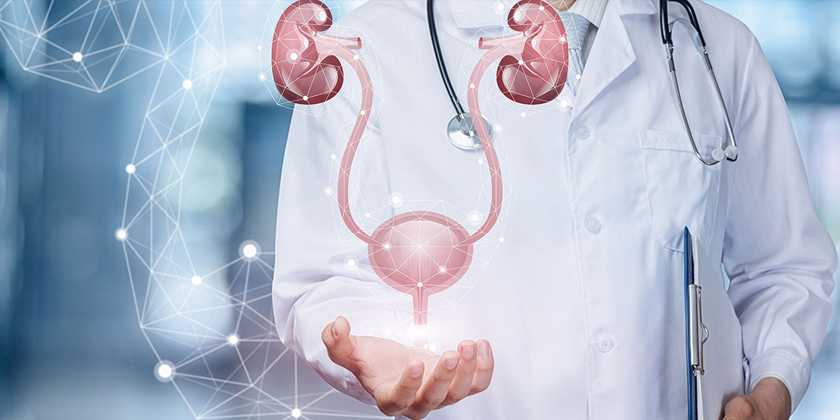The Ultimate Guide to Understanding Common Urological Conditions
What Are Common Urological Conditions?
Why Understanding Urological Conditions Matters
Urological conditions create substantial healthcare burdens because more than 150 million urinary tract infections occur each year throughout the world (WHO). My five years as a public health researcher have focused on studying the impact of urological health awareness on reducing complications and enhancing patient outcomes. When people learn about their health they can get proper treatment quickly and follow prevention strategies.
Key Common Urological Conditions
1. Urinary Tract Infections (UTIs)
The urinary system becomes infected when bacteria invade it and create urinary tract infections.
- Prevalence: Statistics indicate that women experience urinary tract infections in 50–60% of cases while 12% of men will encounter them in their lifetime according to CDC data.
- Symptoms: People with UTIs experience burning sensations during urination alongside frequent urination urges and cloudy urine while also feeling pelvic pain (Mayo Clinic).
- Treatment: Antibiotics (e.g., nitrofurantoin), increased hydration.
- Prevention: Urinating after sexual activity coupled with proper cleanliness routines and sufficient water consumption helps prevent UTIs according to NIDDK.
2. Kidney Stones
Kidney stones form as hard mineral deposits inside the kidneys which trigger intense pain.
- Prevalence: The National Kidney Foundation reports that kidney stones affect one-tenth of the global population.
- Symptoms: Symptoms of kidney stones include pain along the side of the body and the presence of blood in urine while experiencing nausea and increased urination frequency (Cleveland Clinic).
- Treatment: Large stones require treatment through hydration combined with pain relief methods or surgical interventions and lithotripsy.
- Prevention: Increase your water consumption along with following a low-sodium diet and reducing oxalate-heavy foods for prevention (NIDDK).
3. Benign Prostatic Hyperplasia (BPH)
BPH produces non-cancerous prostate enlargement which impacts prostate health.
- Prevalence: According to the American Urological Association BPH affects half of all men who are aged 50 and above.
- Symptoms: According to Mayo Clinic symptoms of BPH include weak urine flow along with frequent nighttime urination and failure to completely empty the bladder.
- Treatment: Medications (alpha-blockers), minimally invasive procedures, surgery.
- Prevention: Regular checkups, healthy diet, physical activity (NIDDK).
4. Bladder Issues (Overactive Bladder and Incontinence)
Bladder problems consist of overactive bladder (OAB) and urinary incontinence.
- Prevalence: Overactive bladder syndrome impacts 33 million U.S. adults while many women experience incontinence following childbirth according to Urology Care Foundation.
- Symptoms: Cleveland Clinic has identified that overactive bladder symptoms include an immediate need to urinate along with unintentional urine leakage.
- Treatment: Treatment options for bladder issues include pelvic floor exercises as well as medications and bladder training while severe cases may require surgery.
- Prevention: Kegel exercises, maintaining healthy weight (Mayo Clinic).
Causes and Risk Factors
- Infections: According to the CDC urinary tract infections are more likely to occur in individuals with inadequate hygiene or those who use catheters.
- Diet and Lifestyle: The National Kidney Foundation states that kidney stones develop due to high sodium intake and dehydration.
- Age and Gender: Men experience prostate problems as they age while women tend to develop bladder problems (AUA).
- Genetics: People with a familial history face increased likelihood of developing kidney stones and benign prostatic hyperplasia according to NIDDK findings.
Prevention Strategies for Urological Health
- Hydration: According to the NIDDK, consuming 2–3 liters of water each day protects against kidney stones and urinary tract infections.
- Healthy Diet: The National Kidney Foundation advises cutting back on sodium intake and red meat consumption while reducing sugar intake and simultaneously increasing consumption of fruits and vegetables.
- Regular Screenings: Men who are over 50 years old and those at high risk should receive yearly urological check-ups as indicated by AUA guidelines.
- Hygiene Practices: Practice front-to-back wiping and avoid retaining urine for proper genital care according to CDC guidelines.
- Exercise: The Urology Care Foundation recommends exercising pelvic muscles as a method to manage bladder problems.
Challenges in Managing Urological Conditions
- Stigma: Stigmatized feelings about bladder problems and prostate conditions lead to delayed treatment according to WHO.
- Access to Care: Low-resource areas face limited availability of urological services (Urology Care Foundation).
- Antibiotic Resistance: Complicates urinary tract infection treatment (CDC).
FAQ: Common Urological Conditions
What are common urological conditions?
The National Institute of Diabetes and Digestive and Kidney Diseases (NIDDK) lists urinary tract infections, kidney stones, BPH, and bladder issues as common urological conditions.
How can I prevent kidney stones?
Maintaining hydration levels and cutting down sodium while minimizing oxalate intake are vital measures to prevent kidney stone formation (National Kidney Foundation).
What causes UTIs?
According to the CDC urinary tract infections develop due to bacterial infections combined with poor hygiene and urinary retention.
When should I see a urologist?
Seek a urologist’s expertise if you experience persistent pain or notice urinary changes and prostate health concerns (AUA).



